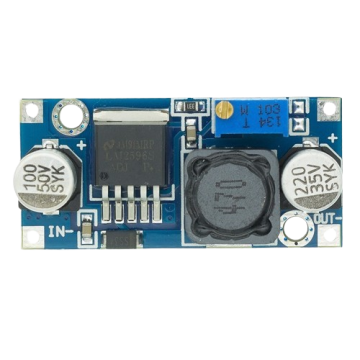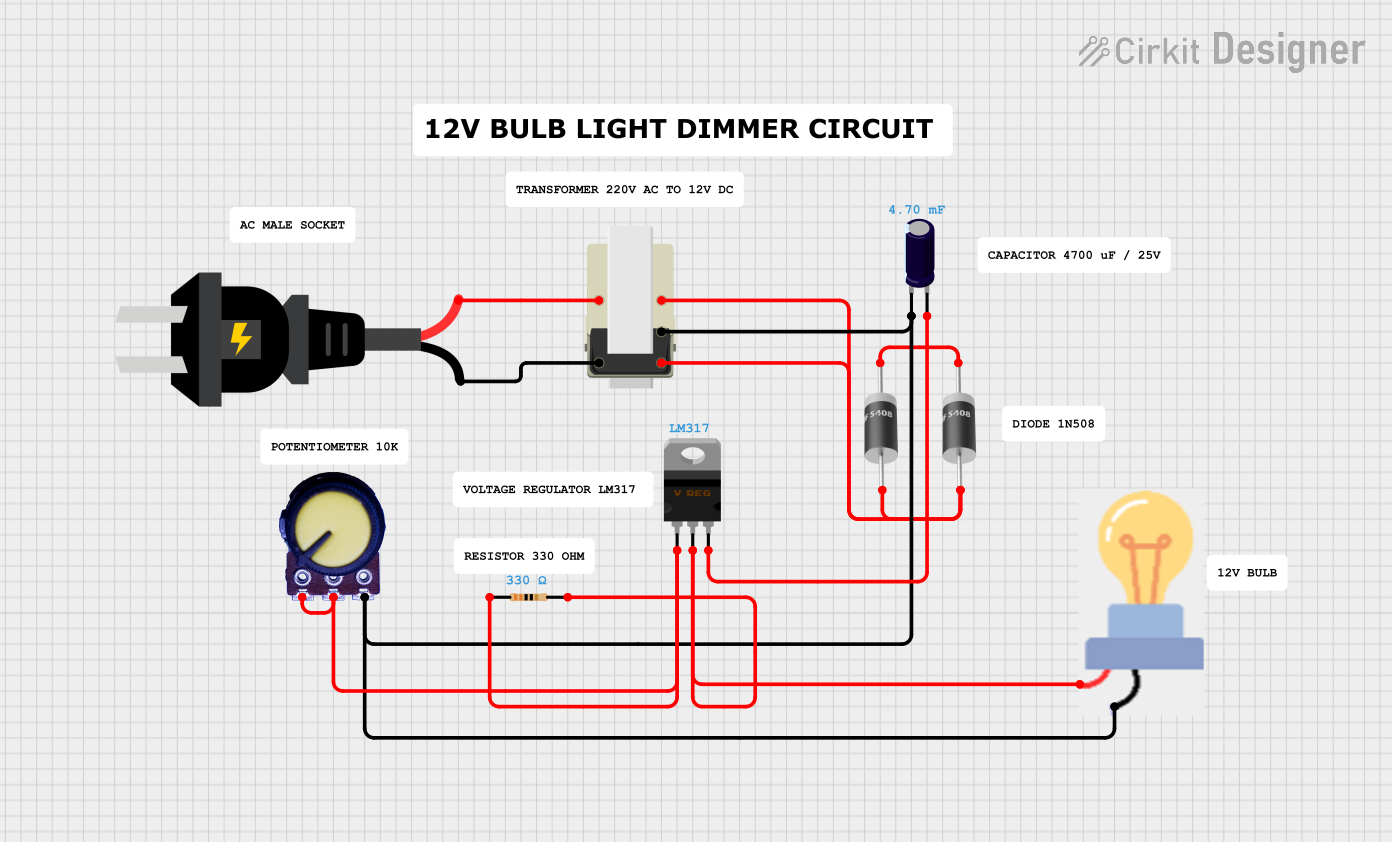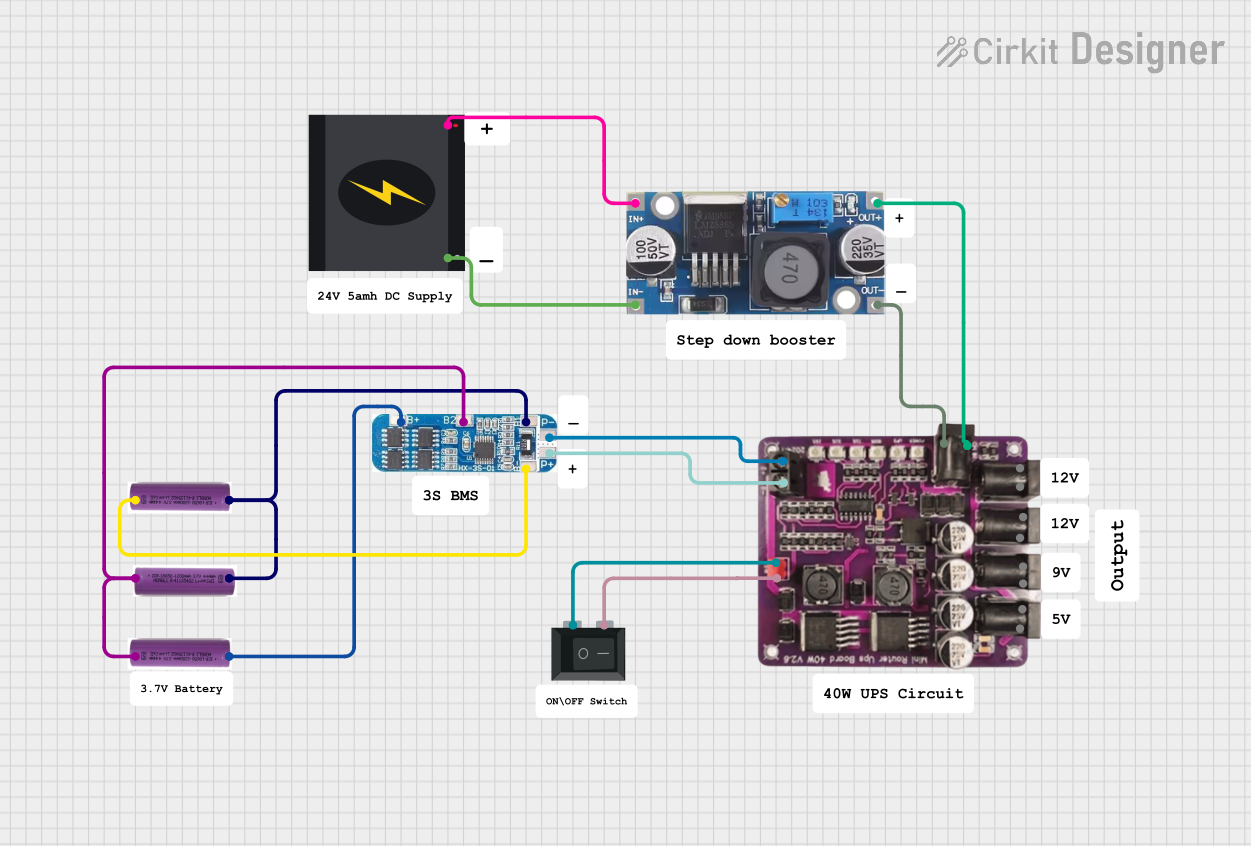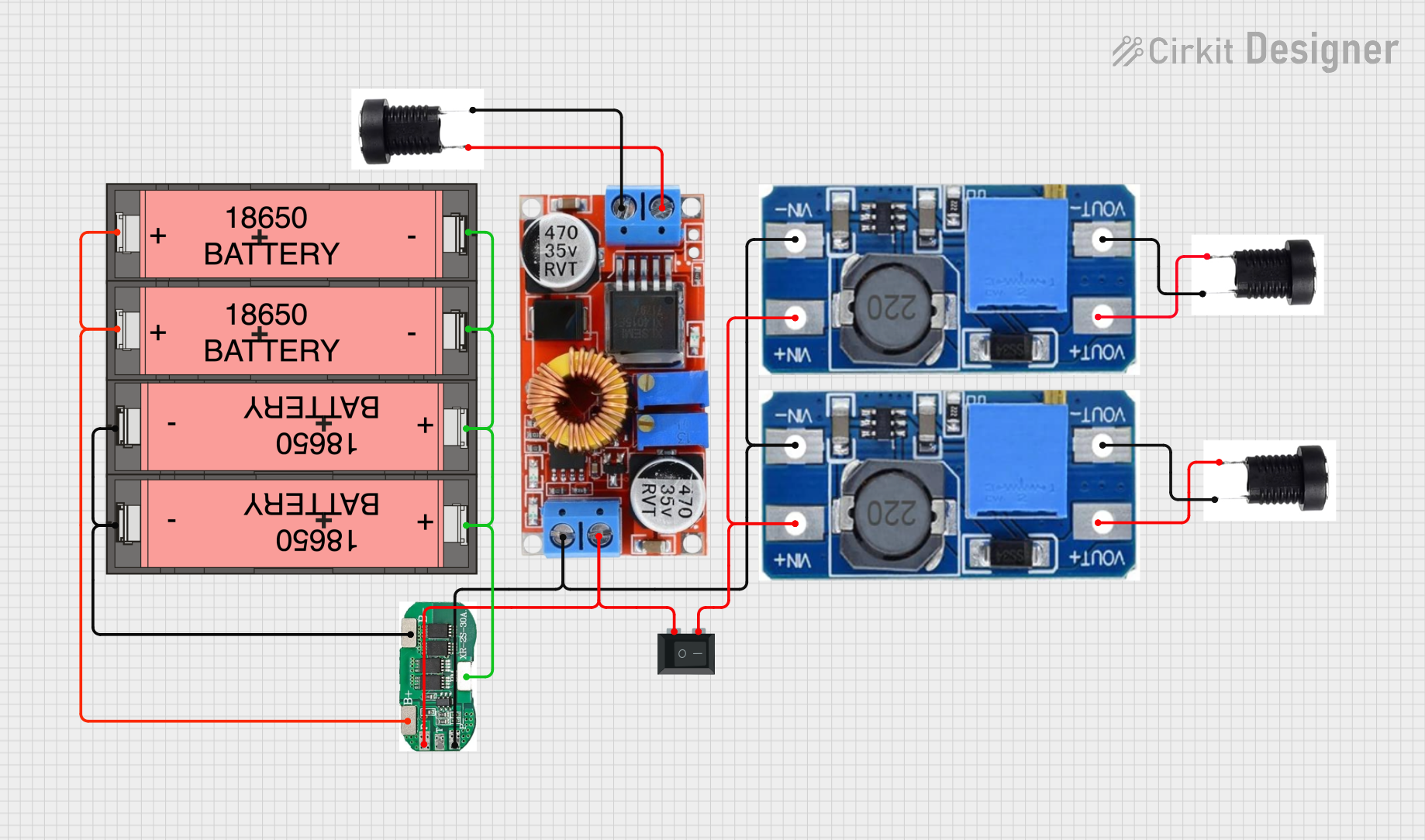
How to Use LM2596S-Switching Voltage Regulators 150 KHZ 3A STEP-DOWN VLTG REG: Examples, Pinouts, and Specs

 Design with LM2596S-Switching Voltage Regulators 150 KHZ 3A STEP-DOWN VLTG REG in Cirkit Designer
Design with LM2596S-Switching Voltage Regulators 150 KHZ 3A STEP-DOWN VLTG REG in Cirkit DesignerIntroduction
The LM2596S-ADJ/NOPB is a high-efficiency switching voltage regulator manufactured by Texas Instruments. It operates at a frequency of 150 kHz and is capable of delivering up to 3A of output current. This component is designed for step-down (buck) voltage regulation applications, making it ideal for converting higher input voltages to lower, stable output voltages.
Explore Projects Built with LM2596S-Switching Voltage Regulators 150 KHZ 3A STEP-DOWN VLTG REG

 Open Project in Cirkit Designer
Open Project in Cirkit Designer
 Open Project in Cirkit Designer
Open Project in Cirkit Designer
 Open Project in Cirkit Designer
Open Project in Cirkit Designer
 Open Project in Cirkit Designer
Open Project in Cirkit DesignerExplore Projects Built with LM2596S-Switching Voltage Regulators 150 KHZ 3A STEP-DOWN VLTG REG

 Open Project in Cirkit Designer
Open Project in Cirkit Designer
 Open Project in Cirkit Designer
Open Project in Cirkit Designer
 Open Project in Cirkit Designer
Open Project in Cirkit Designer
 Open Project in Cirkit Designer
Open Project in Cirkit DesignerCommon Applications and Use Cases
- Power Supply Units: Used in power supply circuits to provide stable voltage to various electronic devices.
- Battery-Powered Devices: Ideal for extending battery life by efficiently converting battery voltage to the required levels.
- Embedded Systems: Commonly used in microcontroller-based projects, including Arduino, to provide regulated power.
- Industrial Automation: Used in control systems and automation equipment to ensure reliable power delivery.
Technical Specifications
Key Technical Details
| Parameter | Value |
|---|---|
| Input Voltage Range | 4.5V to 40V |
| Output Voltage Range | 1.23V to 37V (adjustable) |
| Output Current | Up to 3A |
| Switching Frequency | 150 kHz |
| Efficiency | Up to 90% |
| Operating Temperature | -40°C to +125°C |
| Package Type | TO-263-5 |
Pin Configuration and Descriptions
| Pin Number | Pin Name | Description |
|---|---|---|
| 1 | VIN | Input voltage (4.5V to 40V) |
| 2 | Output | Regulated output voltage (1.23V to 37V) |
| 3 | Ground | Ground connection |
| 4 | Feedback | Feedback input for adjusting output voltage |
| 5 | ON/OFF | Enable/disable control (active low) |
Usage Instructions
How to Use the LM2596S-ADJ/NOPB in a Circuit
- Input Capacitor (CIN): Connect a low ESR capacitor (e.g., 100µF) between VIN and Ground to filter input voltage.
- Output Capacitor (COUT): Connect a low ESR capacitor (e.g., 220µF) between Output and Ground to stabilize the output voltage.
- Inductor (L): Choose an inductor with appropriate current rating (e.g., 33µH) to smooth the output current.
- Feedback Resistors (R1, R2): Use a voltage divider network to set the desired output voltage. The output voltage ( V_{OUT} ) can be calculated using the formula: [ V_{OUT} = 1.23 \times \left(1 + \frac{R1}{R2}\right) ]
- ON/OFF Control: Connect the ON/OFF pin to ground to enable the regulator. Leave it floating or connect to VIN to disable.
Important Considerations and Best Practices
- Thermal Management: Ensure adequate heat dissipation by using a heatsink or proper PCB layout to avoid overheating.
- Component Selection: Use low ESR capacitors and inductors with appropriate current ratings to ensure stable operation.
- PCB Layout: Minimize the length of high-current paths and place input/output capacitors close to the regulator pins to reduce noise and improve performance.
Example Circuit with Arduino UNO
Below is an example of how to use the LM2596S-ADJ/NOPB to power an Arduino UNO with a 5V output:
/*
* Example code to read analog input from a sensor and print the value
* to the serial monitor. The LM2596S-ADJ/NOPB is used to provide a
* stable 5V output to power the Arduino UNO.
*/
const int sensorPin = A0; // Analog input pin for the sensor
int sensorValue = 0; // Variable to store the sensor value
void setup() {
Serial.begin(9600); // Initialize serial communication at 9600 baud
}
void loop() {
sensorValue = analogRead(sensorPin); // Read the analog input
Serial.print("Sensor Value: ");
Serial.println(sensorValue); // Print the sensor value to the serial monitor
delay(1000); // Wait for 1 second before the next reading
}
Troubleshooting and FAQs
Common Issues and Solutions
No Output Voltage:
- Solution: Check the input voltage and ensure it is within the specified range (4.5V to 40V). Verify that the ON/OFF pin is connected to ground to enable the regulator.
Overheating:
- Solution: Ensure proper heat dissipation by using a heatsink or improving PCB layout. Check for excessive load current and reduce if necessary.
Output Voltage Instability:
- Solution: Use low ESR capacitors for input and output filtering. Verify the feedback resistor values and connections.
FAQs
Can I use the LM2596S-ADJ/NOPB to power a 3.3V device?
- Yes, you can adjust the output voltage to 3.3V using the appropriate feedback resistor values.
What is the maximum input voltage for the LM2596S-ADJ/NOPB?
- The maximum input voltage is 40V.
How do I calculate the output voltage?
- Use the formula ( V_{OUT} = 1.23 \times \left(1 + \frac{R1}{R2}\right) ) to calculate the output voltage based on the feedback resistor values.
By following this documentation, users can effectively utilize the LM2596S-ADJ/NOPB switching voltage regulator in their projects, ensuring efficient and stable power delivery.